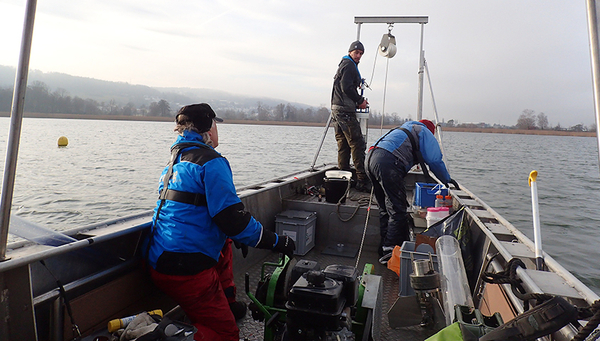Archive detail
Determining when Anthropocene epoch starts
October 26, 2017 |
Industrial chemicals as marker
The geologic record can sometimes provide clear-cut evidence of epoch changes. For example, when a meteorite collided with Earth 66 million years ago, levels of the metal iridium from the space rock spiked in sediments around the world. This clearly marked the end of the Cretaceous period. However, trying to define the start of the proposed — and much debated — Anthropocene could be more complicated. Human influence over the climate and environment began with the Industrial Revolution in the 1800s, and accelerated dramatically in the second half of the 20th century. Many markers of human impact on the planet from agriculture, waste disposal and other activities have been archived in the planet’s sedimentary records. The rise in industrial chemicals, such as pesticides and pharmaceuticals, is another example of a human-driven activity that has been captured in sediment layers. To explore the record of synthetic compounds as a possible marker to help define the Anthropocene, Aurea C. Chiaia-Hernández, Juliane Hollender and colleagues turned to a new analytical technique combined with sophisticated data analysis to characterize patterns of contamination over time.
Turning point 1950
The researchers applied high-resolution mass spectrometry to investigate synthetic chemical contamination in two lakes in Central Europe. They examined 1-meter long cores from each lake bottom, capturing the past 100 years of sediment layers. According to the analysis, the lakes’ sediments contained few synthetic contaminants before the 1950s. But during the 1950s, concentrations of industrial chemicals started to appear in the samples, which is consistent with the boom in industrial activities post-World War II. The researchers say this record clearly demonstrates the beginning of large-scale human impact on the environment. It also shows a decline in contamination following the installation of wastewater treatment plants in the 1970s, providing evidence for successful mitigation measures. Additionally, the introduction of new pollutants that are now finding their way into surface waters can be discovered.
The authors acknowledge funding from the Swiss Federal Office for the Environment, the Swiss National Science Foundation and Eawag.
Original paper
Aurea C. Chiaia-Hernández et al.: Unravelling contaminants in the Anthropocene using statistical analysis of LC-HRMS non-target screening data as recorded in lake sediments; Environmental Science & Technology: http://pubs.acs.org/doi/10.1021/acs.est.7b03357 (only the paper’s abstract is free access)
This text: press is based on a press release from the American Chemical Society ACS.


